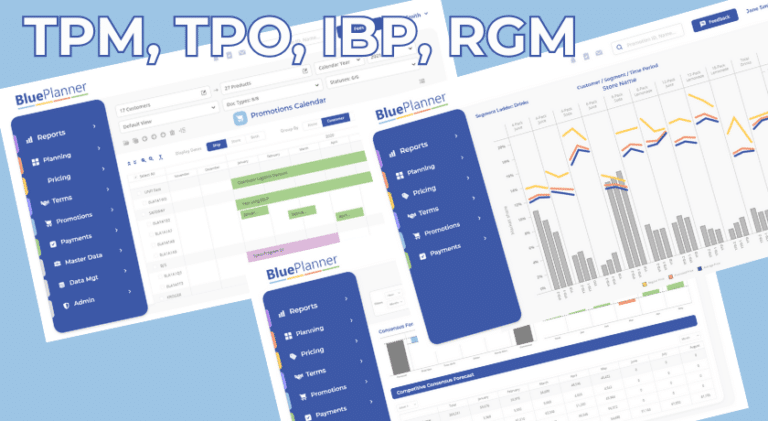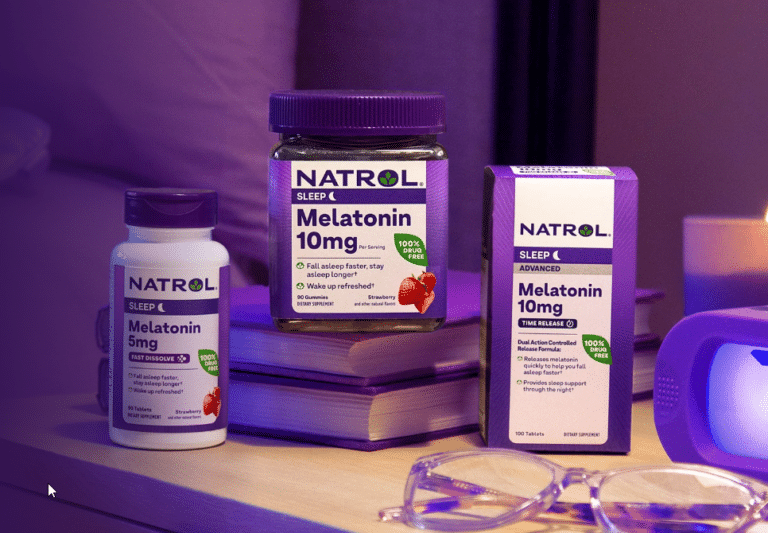
Kodiak Switches to BluePlanner Trade Promotion Management (TPM)
Kodiak Cakes, maker of whole grain and protein-packed breakfast foods and snacks, has s...

Like any growing business, there are growing pains, and certain points where the shift to a tech solution becomes imperative. Every consumer goods’ brand has seen different points of the sale process become more difficult with growth, especially managing promotions, trade spend, and deductions. These take up more and more time and headspace until the time comes to find a solution, source vendors, and set a budget.
You have heard plenty from us before about TPM, but today we are sharing our perspective on the purpose and value of a platform for trade promotion management as well as TPO, IBP, and RGM, or the tools of the “trade” promotion category.
For those who are new to UpClear, our core product is “BluePlanner” and is used for four major types of work:
Trade Promotion Management (TPM)
Trade Promotion Optimization (TPO)
Integrated Business Planning (IBP)
Revenue Growth Management (RGM)

Trade Promotion Management is all the activities undertaken by Consumer Goods sales teams and adjacent functions (e.g., accounting, finance) to manage sales plans and “trade spending” – the expenses typically related to distribution, pricing, and promotion. These activities typically include setting volume and spending target/budgets, planning and executing distribution changes, price changes & promotions, forecasting sales & spending, and settling spending commitments with customers.
Each one of these activities has several process steps, like approval of activities, application of pricing conditions (i.e., off-invoice allowances), providing sales estimates to Demand Planning, researching deductions, and the month-end trade accrual forecast.
As a brand’s sales, distribution, promotions, and deductions grow and more people take part in the process, some predictable challenges emerge:
1) it takes longer to execute transactional, business-critical tasks
2) information is not organized and become outdated quickly
3) assessing performance and re-forecasting are difficult
Another predictable outcome is that the trade spending expense escalates quickly; frequently to a dollar value equal to 20% of gross revenue. This is when a TPM system can help.
TPM adds structure, control, automation, and insight to sales planning and trade management. The system becomes the “Operating System” for the sales team. It standardizes and centralizes information and adds workflow that ensures proper approvals are received and documented. Data is managed so that reports on sales, trade spending, and promotions are available at the click of a button.
TPM adds structure, control, automation, and insight to sales planning and trade management. The system becomes the “Operating System” for the sales team. It standardizes and centralizes information and adds workflow that ensures proper approvals are received and documented. Data is managed so that reports on sales, trade spending, and promotions are available at the click of a button.
Trade Promotion Optimization, or TPO, is the process of more thoroughly understanding the performance of your promotions, learning if the return on investment (ROI) is favorable or unfavorable, and creating strategies to improve performance and ROI by changing mix of tactics, price discounts, and/or frequency of promotions.
Like TPM, TPO can be executed without a system. And like TPM, TPO has many dynamics and process steps that make it difficult to do manually. Two specific examples are data sources and simulation. The first TPO deliverable, understanding performance and ROI, is commonly referred to as Post Event Analysis or PEA.

A very typical input to PEA is point of sale (POS) data that tells you how many products were sold to shoppers on promotion. POS data may come from different syndicated suppliers (e.g. NielsenIQ, IRI, Spins) or retailers. Other important details needed for analysis are already present in the promotion planning portion of the TPM system. If you do this without a system, you’ll have to manage the data and maintain the reports. A TPO system with post-event analysis automates the creation of these reports.
The second piece of TPO work, creating strategies to improve performance, can be enhanced using predicted baselines and simulation. The simulation calculates the outcome of a promotion for a combination of tactics- usually price reduction, advertising, and display. With this capability, you can “test” different options as you are building your customer plans. Unlike a manual process, the creation and maintenance of predictive baseline and promotion simulation models are part of the system with a TPO service.
The literal and figurative “walls” that exist between Sales and Demand Planning teams in Consumer Goods companies are extensive. Different organizations, objectives, inputs, outputs, processes, and metrics; and sometimes metrics with the same name but different definitions. And they certainly don’t use the same systems. To break down these walls, many consumer goods companies have adopted an Integrated Business Planning (IBP) process to facilitate information sharing and collaboration between the functions. A popular form of IBP is Sales & Operations Planning or S&OP. The goal of S&OP is for the different stakeholders in the business to align on a “consensus forecast.” The sales team’s input to S&OP is a forecast that includes their assumptions for the future.

IBP goals, too, can be achieved without a system. The manual execution of the process, however, comes with overhead and familiar pain points usually related to Excel limitations. An IBP service provides functionality that ensures the process can scale up and be repeated with confidence. It also creates connections between functions by sharing forecasts- importing a demand forecast and exporting the sales forecast. Finally, you will see analysis evolve from Excel reports that have to be manually created and updated to automated reporting that increase the speed at which you are able to draw insights from data.

The fourth type of work is called Revenue Growth Management or RGM. If the scope of TPM and TPO is primarily promotion (revenue) management, the scope of RGM is total revenue management. Given this scope, there is a greater focus on the non-promoted part of your business, the pricing that drives this, and the combination of pricing and promotion strategies to achieve your objectives. A data science team is usually needed to do RGM right. In addition to the promotion models used in TPO simulation, RGM uses price elasticity models to help you understand how much volume is likely to change when price changes.
These can be used in forward-looking predictions, and backward-looking analysis. Other analyses common in RGM include: 1) decomposition of profit into categories like brand margin, customer margin, cost to serve, taxes, etc., and 2) price “ladders” that help you understand gaps between products (including competitors) and customers.
Initially, deploying TPM software to plan and manage promotions is the solution to the growth pain most immediately felt by growing brands. We consider it the foundation and starting point upon which other capabilities are added. UpClear’s BluePlanner platform was designed to keep pace with our clients, so as their needs change they can readily access more advanced features. These layers fortify the trade promotion management process with more insight and collaboration… enabling better, faster decisions across the entire promotional lifecycle.

Kodiak Cakes, maker of whole grain and protein-packed breakfast foods and snacks, has s...

BluePlanner was taken to the market 15 years ago. Over this time, the majority o...

Vytalogy Wellness, a modern wellness company formed by merging the brands Natrol and Ja...
